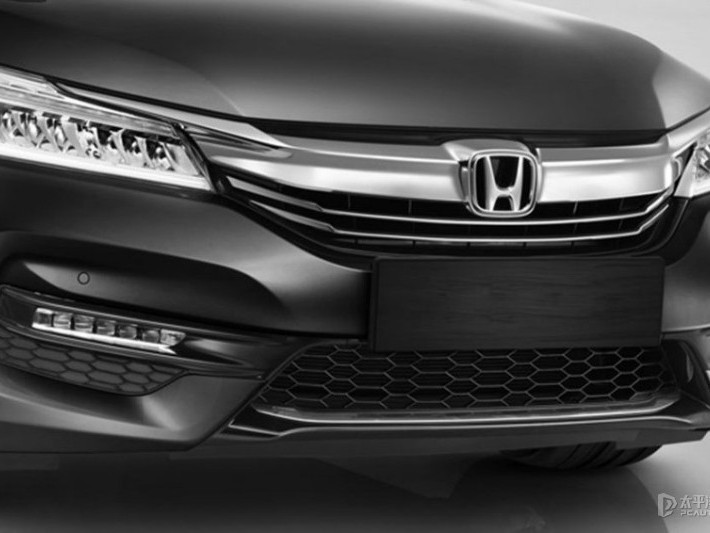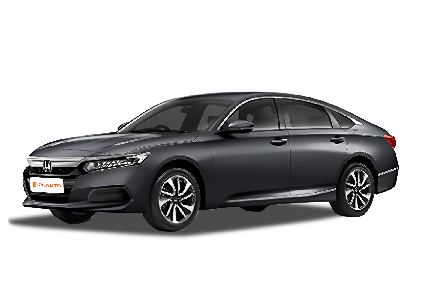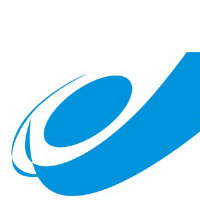Q
Why is my 2020 Honda Accord shaking?
A 2020 Honda Accord shaking can be caused by several issues. The most common culprit is tire problems, like imbalanced tires or irregular air pressure. Malaysia's rainy and humid climate can lead to uneven tire wear, so it's advisable to first check the tire condition and get a wheel alignment and balancing done. Next, engine-related factors such as old spark plugs, carbon buildup, or a clogged fuel system—especially prevalent in cars frequently driven at low speeds in urban areas. Regular spark plug replacement and using high-quality fuel additives can help improve this. Additionally, worn engine mount bushings can cause noticeable vibrations at idle, a common issue with rubber parts in hot and humid environments. Worn suspension components, like leaking shock absorbers, can also lead to shaking while driving. It's worth noting that Malaysia's rough road conditions can accelerate suspension wear. If shaking is accompanied by warning lights, it might indicate the electronic stability system or engine management system activating a protective mechanism; diagnosing trouble codes with a scanner promptly is recommended. For hybrid models, also check if the battery cooling system is functioning properly, as reduced battery efficiency in high temperatures can cause uneven power delivery. During regular maintenance, ask technicians to focus on these areas—most shaking problems can be effectively resolved with targeted upkeep.
Special Disclaimer: This content is published by users and does not represent the views or position of PCauto.
Related Q&A
Q
How much is a brake job for a 2020 Honda Accord?
For the brake system repair costs of the 2020 Honda Accord in Malaysia, the specific prices vary depending on the repair items and the type of parts chosen. Generally speaking, the cost to replace front brake pads is around 300 to 600 Malaysian Ringgit, while rear brake pads are approximately 250 to 500 Malaysian Ringgit. If brake discs need to be replaced at the same time, the cost will be higher, ranging from about 800 to 1500 Malaysian Ringgit, depending on whether you choose original equipment manufacturer (OEM) parts or third-party brands. In addition, brake fluid replacement usually costs an extra 100 to 200 Malaysian Ringgit, and it's recommended to have it checked every 2 to 3 years or 40,000 to 60,000 kilometers to ensure safety. Repair costs in Malaysia can also vary by region and service center; authorized dealership service centers typically charge more but offer original factory warranties, while third-party repair shops may be more affordable but require attention to part quality. Regular brake system checks are extremely important. If you notice abnormal noises, vibrations, or a soft pedal when braking, you should have it repaired promptly to avoid safety hazards. At the same time, developing good driving habits can also extend the service life of the brake system.
Q
How much oil for a 2020 Accord?
The oil capacity of the 2020 Honda Accord depends on the engine type. The 1.5-liter turbocharged engine requires approximately 3.7 liters of oil, while the 2.0-liter turbocharged engine needs around 5.7 liters. However, the actual amount added should be checked using the oil dipstick. It's recommended to use the factory-recommended 0W-20 viscosity oil when changing the oil to ensure optimal engine performance. In Malaysia's hot and rainy climate, regularly checking the oil condition is particularly important because high temperatures can accelerate oil degradation. It's generally advised to change the oil every 5,000 to 10,000 kilometers or 6 months, with the specific interval referring to the owner's manual. It's worth noting that different brands have varying oil additive formulas, but any oil meeting the API SN or SP standards will provide good protection. If the vehicle is often driven in congested traffic, the maintenance interval can be shortened appropriately. Additionally, the location of the Accord's oil filter is designed for easy DIY replacement, but if you lack experience, it's still recommended to go to an authorized service center. They will also check key components like the chassis and brake system to ensure driving safety.
Q
Can I track my 2020 Honda Accord?
Whether the 2020 Honda Accord you're asking about supports vehicle tracking depends on the specific configuration and any additional equipment installed. The factory-standard 2020 Accord in the Malaysian market doesn't come with a built-in GPS tracking system. However, owners can enable tracking in two ways. First, by adding Honda's original HondaLink connected car system, which offers smart services like vehicle location tracking and anti-theft alerts. Second, there are third-party GPS trackers available on the market; these typically require professional installation and a subscription to a service platform. It's important to note that when using vehicle tracking devices in Malaysia, you must comply with the Personal Data Protection Act (PDPA) to ensure legal data usage. Additionally, it's advisable for owners to regularly check the compatibility of their vehicle's electronic systems to avoid modifications affecting the original factory warranty. If choosing a third-party service, be sure to confirm that the provider holds certification from the Malaysian Communications and Multimedia Commission (MCMC) to ensure device signal stability and data security.
Q
How to start Honda Accord 2020 with key?
Starting the 2020 Honda Accord with the traditional key is super straightforward. First, make sure the gear is in Park (P), then insert the key into the keyhole on the right side of the steering wheel. Turn it clockwise to the "ON" position to let the car run its self-check—you’ll see the dashboard lights flash briefly. Keep turning it to the "START" position to fire up the engine; once it starts, let go of the key and it’ll automatically spring back to "ON". Quick tip: if the steering wheel is locked, gently wiggle it left and right while turning the key to unlock it. For Malaysian users, the tropical heat can take a toll on battery life. If you notice a delay when starting, it’s a good idea to regularly check the battery’s health or hit up an authorized service center for a proper check. The 2020 Accord does come with a smart key version (push-button start), but the traditional key model still keeps that mechanical backup—smart move that balances tech convenience with emergency practicality. Plus, Honda’s i-VTEC engine tech ensures it runs smoothly even in hot, humid conditions, perfect for Malaysia’s roads. If you’re leaving the car parked for a long time, disconnect the negative battery terminal to avoid draining it.
Q
How to reboot Honda Accord screen 2020?
To reboot the touchscreen of a 2020 Honda Accord, try pressing and holding both the "volume knob" and "audio power" buttons together for about 10 seconds until the screen goes black and restarts. This is similar to rebooting a smartphone and can fix most system lag or unresponsive issues. If the problem persists, check if your vehicle's software is up to date – you can do this via Honda Malaysia's official website or an authorized dealership. In daily use, avoid leaving the screen exposed to prolonged direct sunlight in high temperatures, and regularly clearing the cache can also improve system smoothness. Given Malaysia's hot and humid climate, car owners should also pay attention to moisture protection for the screen. If the system frequently freezes, it might be a hardware issue, so head to an authorized Honda service center for inspection. Other models like the Toyota Camry or Nissan Teana have similar reboot methods, though the exact steps may vary slightly – always refer to your specific vehicle's manual. Keeping your infotainment system updated not only boosts stability but also unlocks new features, such as improved compatibility with Apple CarPlay or Android Auto.
Q
How to open Honda Accord fuel door 2020?
To open the fuel door on a 2020 Honda Accord, first make sure the vehicle is unlocked. Then just press the right edge of the fuel door gently, and it'll pop open automatically—no need to mess with any buttons or levers inside the car. It's a super convenient and modern design. If the fuel door won't open, it might be because the car isn't fully unlocked or the mechanism is stuck. Try locking and unlocking the car again, or gently tap around the fuel door to help release any pressure. With Malaysia's hot and humid weather, the rubber seal on the fuel door can get sticky as it ages. Regularly treating it with a silicone-based lubricant will prevent that issue. It's worth noting that fuel door release methods vary by brand. For example, some German cars require pulling a dedicated lever inside, while certain Korean models need you to hold down the fuel button on the key fob. Knowing your own car's specific method is key to avoiding that flustered moment at the gas station. The 2020 Accord's fuel door also has a drain hole design, which does a solid job of preventing water buildup and corrosion in Malaysia's rainy climate. Owners should check monthly to make sure those drain holes stay clear.
Q
How much does a tire cost for a 2020 Honda Accord?
The tire prices for the 2020 Honda Accord in the Malaysian market vary depending on brand, model, and size. Typically, original equipment (OE) tires from brands like Michelin, Bridgestone, or Goodyear range from around RM400 to RM800 per tire. The exact price depends on the tire's performance focus, such as comfort, fuel efficiency, or sportiness. Additionally, prices may differ between tire shops in different areas, so it's advisable to compare prices across multiple stores or online platforms to get the best deal. As the only vehicle component in contact with the road, tire quality directly impacts driving safety and handling. Regularly checking tire wear and air pressure is essential maintenance. If the tire tread depth drops below 1.6mm, or if cracks, bulges, or other damage are found, the tires should be replaced promptly to ensure driving safety. Malaysia's tropical climate with frequent rain makes choosing tires with good drainage performance particularly important. It's also crucial to ensure the tire's load index and speed rating meet the vehicle's requirements; this information can be found on the sidewall markings of the tire.
Q
How to connect to a 2020 Honda Accord?
There are a few main ways to connect to the 2020 Honda Accord. First up is Bluetooth: head into the vehicle settings menu, switch on Bluetooth, then search for and pair with the "Honda Accord" device in your phone's Bluetooth settings. Just enter the pairing code shown on the screen, and you're good to go—perfect for streaming music and taking calls. Next, there's Apple CarPlay or Android Auto. Plug your phone into the USB port on the center console using a USB cable, and the system will automatically recognize it and launch the corresponding feature, giving you a richer experience with navigation, music, and voice control. Additionally, the 2020 Accord supports the HondaLink app, which lets you remotely check the vehicle status, locate it, and start the engine through your phone's app, though you'll need to register and subscribe to the relevant services beforehand. For Malaysian users, it's important to note that local models might have slightly different configurations, so it's a good idea to check the owner's manual to confirm specific features. Also, keep both your phone and the car's infotainment system updated to the latest versions to ensure compatibility. These connection methods not only boost driving convenience but also reflect the trend of modern car intelligentization, making the driving experience more seamless and safe.
Q
Why is my Honda Accord not starting 2020?
If your 2020 Honda Accord won't start, there are a few common culprits to check. First off, battery issues—think old battery, corroded terminals, or a dead cell. Malaysia's hot and humid weather can really shorten battery life, so try checking the battery status or jump-starting it. Next, the starting system might be acting up—like a faulty ignition switch or a bad starter relay. Those usually leave you with nothing when you turn the key. Don't sleep on fuel system problems either; a failing fuel pump or clogged filter means the engine isn't getting enough gas, and using low-quality fuel over time makes this more likely. On newer models, smart key glitches are pretty common too—could be a dead key fob battery or signal interference. Malaysian drivers should also watch out for a damp distributor cap during the rainy season; that can short out the ignition system. If you've ruled out these simpler fixes and it still won't start, best to hit up a Honda authorized service center for a pro diagnosis. Newer cars have such complex electronics, they'll probably need special tools to read the error codes. Regular maintenance and avoiding cheap fuel go a long way in preventing starting troubles, and if your Accord has stop-start, keep that battery in top shape—it's way pickier about battery health.
Q
How to open Honda Key 2020?
To open the 2020 Honda key fob, first locate the small groove or button on the side. Use your fingernail or a thin tool to gently press it while sliding the key cover outward—this will separate the case and reveal the battery and mechanical key inside. These fobs typically use a CR2032 coin battery; if your remote stops working, low battery is likely the culprit and you’ll need to replace it.
For Malaysian users, keep in mind that the humid climate can speed up oxidation on battery contacts. Checking the key’s seal regularly can help extend its lifespan. If you run into trouble, it’s best to head to an authorized Honda service center instead of trying to take it apart yourself—you don’t want to accidentally damage it.
Key designs can vary slightly across Honda model years, by the way. Some newer models come with smart keys that require specific steps to enter service mode before battery replacement, so it’s a good idea to check your owner’s manual or ask a professional technician for guidance. Also, Malaysian Honda owners should note that remote keys have limited water resistance. Avoid leaving them submerged during heavy rain or car washes, and if they do get wet, take out the battery immediately, let everything dry thoroughly, and consider getting the circuitry checked if needed to make sure it still works properly.
Latest Q&A
Q
Is the BMW 5 Series a good buy?
The BMW 5 Series is a solid pick in Malaysia's luxury mid-size sedan market. It blends luxury and driving fun nicely, with a turbocharged engine that's plenty powerful yet still delivers decent fuel economy—great for both daily commutes and long drives. The interior is well-crafted, and it's packed with tech like the iDrive system and driver assistance features that really enhance the experience. Though, given Malaysia's hot weather, springing for ventilated seats is a smart move for extra comfort. On the flip side, the 5 Series can be a bit pricey to maintain, and parts sometimes take a while to come in—things to keep in mind. The Mercedes E-Class and Audi A6 are also strong contenders in this segment, so shoppers should go with what fits their budget and taste. Definitely test-drive at an authorized dealer first to get a real feel for performance and comfort, and check out the latest promotions—you might score a better deal that way.
Q
What's new about the 2024 BMW 5 series?
The 2024 BMW 5 Series brings several upgrades to the Malaysian market, with the most eye-catching being the debut of the all-electric i5 variant, available in eDrive40 and M60 xDrive configurations. It offers a maximum range of 582 kilometers (WLTP standard), balancing performance and environmental needs. The combustion engine models are equipped with an updated 48V mild-hybrid system, optimizing fuel efficiency for the 2.0-liter and 3.0-liter turbocharged engines, paired as standard with an 8-speed Steptronic transmission. Externally, the new model features sharper double L-shaped LED headlights, a larger kidney grille, and introduces exclusive new paint options like Brooklyn Grey. Inside, a curved floating display combines a 12.3-inch digital instrument cluster with a 14.9-inch central control screen, running the 8.5th generation iDrive system that supports wireless Apple CarPlay and Android Auto, popular among Malaysian users. Notably, the new car is first to feature the AirConsole in-vehicle gaming platform, with an optional rear-seat 31-inch BMW Theatre Screen. For Malaysian consumers, this model retains its sporty handling DNA while significantly enhancing intelligent and comfort features, making it particularly suitable for high-end users who value technological experiences. The local market is expected to continue offering the long-wheelbase version, providing superior rear passenger space compared to its European-spec counterparts, with potential optimizations to the cooling system for tropical climates.
Q
Who designed the BMW 5 Series in 2024?
The design of the 2024 BMW 5 Series is led by the BMW Group Design Team. Its exterior and interior continue the brand's iconic sporty elegance while integrating more modern tech elements, like sharper lines and a larger kidney grille. Inside, you'll find the latest curved display and eco-friendly materials. For Malaysian fans, this car not only retains BMW's classic driving pleasure but also optimizes the air conditioning system and seat ventilation for the tropical climate, ensuring comfort. It's worth noting that the 5 Series has always emphasized balancing handling and luxury, and the 2024 model further enhances its intelligent driving assistance systems – things like automated parking and lane-keeping, which are perfect for Malaysia's busy city roads. Plus, the local market will likely get right-hand drive versions with efficient powertrain options, including petrol and plug-in hybrid models, to meet different consumer needs. The BMW 5 Series has long been a top pick in Malaysia's luxury sedan market, and the 2024 upgrades are expected to attract more buyers who value technology and driving experience.
Q
What is the new BMW update for 2024?
BMW's 2024 upgrades are all about tech innovation and local adaptation, with several refreshed models hitting the Malaysian market – think the new X3, X5, and the all-electric iX range. These rides come packed with the latest eighth-gen iDrive system, boasting smarter voice control and AR live navigation. They've also tweaked the battery management system to boost EV range in tropical climates. Malaysian users get exclusive connected services too, like real-time traffic alerts and charging station maps, making them better suited for local driving conditions. Plus, BMW's introducing 48V mild hybrid tech to some models for the first time, paired with tuned 2.0T and 3.0T engines – balancing fuel efficiency with power, perfect for Malaysia's hilly roads and city traffic jams. Oh, and the driver assistance system's been upgraded, adding automatic lane changing and traffic light recognition for extra safety. If you're into the details, head to an authorized Malaysian dealership for a test drive or check the official website configuration table. Some models even come with a monsoon-specific package, featuring enhanced drainage tires and moisture-resistant interior materials – showing the brand really gets local needs.
Q
When was the BMW 5 Series last redesigned?
The last major redesign of the BMW 5 Series came in July 2023 with the eighth-generation model (G60). This new car adopts the brand's latest design language, including a flatter kidney grille and sharp-looking headlights. Inside, it's fitted with a curved floating display made up of a 12.3-inch digital instrument cluster and a 14.9-inch central control screen, running the newest iDrive 8.5 infotainment system. For the Malaysian market, this new model is expected to officially launch in 2024, likely offering powertrain options like the 520i and 530e plug-in hybrid, continuing the 5 Series' competitiveness in the local luxury executive sedan segment. Notably, the eighth-gen 5 Series marks the first time a fully electric version, the i5, has been introduced, signaling BMW's accelerated shift towards electrification. However, whether the i5 will make its way to Malaysia still awaits further official confirmation. Since its debut in 1972, the 5 Series has been a crucial model for BMW, maintaining a balance between sportiness and luxury through eight generations of evolution. The new model also sees significant upgrades in smart technology and driver assistance, such as the addition of automatic lane change assist and remote parking functions. These enhancements are set to further boost its appeal in Malaysia's luxury car market.
View MoreRelated News

Starting from RM 187,400! A Honda Accord with sufficient trunk capacity, would you consider it?
AshleyJul 19, 2024

Honda N-ONE e: Officially launched in the Japanese market, with a range of 295 kilometers
AshleySep 12, 2025

Honda Prelude returns after 24 years, the sixth-generation Prelude will be released in Japan
Kevin WongSep 4, 2025

Honda S7 and P7 sales in China fall short of expectations, significantly lagging behind Toyota and Nissan.
RobertSep 4, 2025

The 2025 Honda Prelude Is Back: Hybrid-Powered Coupe with Type R Chassis Tech
JohnAug 4, 2025
View More













 Cars
Cars




Pros
Cons